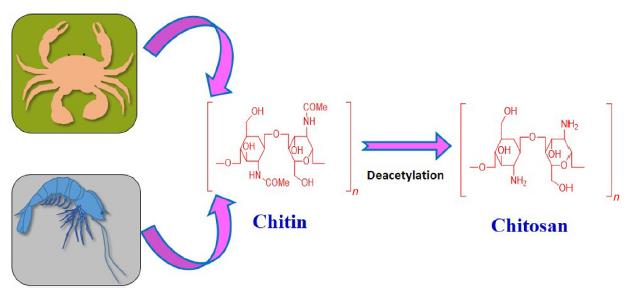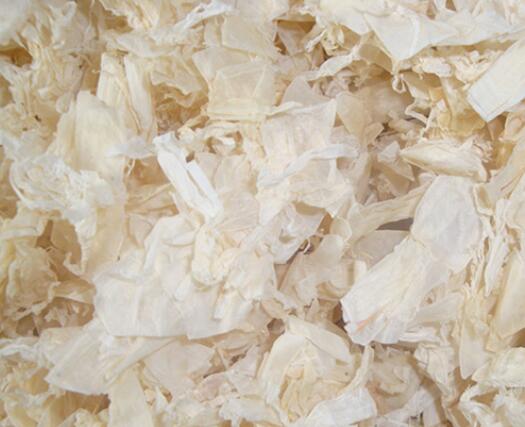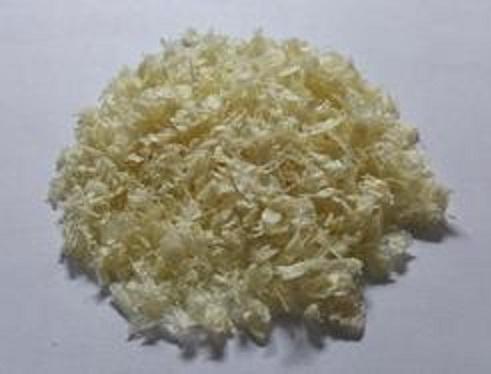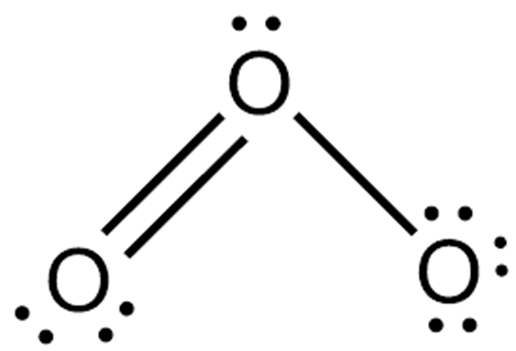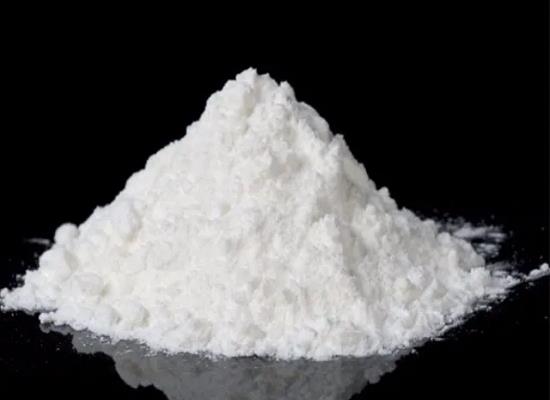Chitin: source and biomedical applications
General Description
Chitin, a natural biopolymer abundant in nature, serves as a structural component in arthropod exoskeletons, fungal cell walls, and marine organism shells. It is the second most abundant natural polymer after cellulose and is widely used in various fields due to its biodegradability and biocompatibility. In biomedical applications, chitin has shown promise in neurological and musculoskeletal diseases by promoting nerve regeneration and repairing cartilage injuries. Additionally, it has demonstrated potential in addressing cardiovascular and hematological diseases by restoring endothelial dysfunction, absorbing excessive bilirubin, exhibiting hemostatic properties, and reducing serum cholesterol levels. The versatile properties of chitin highlight its potential for advancing treatment options in these medical fields.
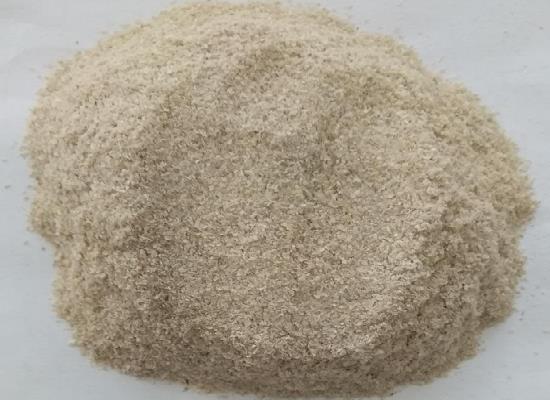
Figure 1. Chitin
Source
Chitin is a natural biopolymer that is widely distributed in nature and serves as a structural component in the exoskeletons of arthropods (such as insects, spiders, and crustaceans) and the cell walls of fungi. It is the second most abundant natural polymer after cellulose. The main source of chitin is the shells of shellfish, such as shrimp, crab, and lobster, which contain significant amounts of this polysaccharide. Additionally, chitin can be obtained from the discarded shells of these marine organisms, making it a valuable byproduct of the seafood industry. In addition to marine sources, chitin can also be found in the cell walls of fungi, where it provides structural support and protection. The abundance of chitin in nature, coupled with its biodegradability and biocompatibility, has led to its wide range of applications in various fields, including medicine, agriculture, food technology, and environmental protection. As a versatile and sustainable biomaterial, chitin has attracted significant interest for its potential use in diverse industrial and biomedical applications. 1
Biomedical applications
Neurological and Musculoskeletal Diseases
Chitin, a natural polysaccharide found in the exoskeletons of crustaceans and insects, has demonstrated promising applications in both neurological and musculoskeletal diseases. In neurological treatment, chitin has been utilized in various forms. It has been used in combination with carbon nanotubes to create scaffolds for neural growth, showing potential for nerve regeneration. Additionally, chitin-based biological absorbable tubes and catheters have been effectively employed as bridges for nerve grafts in animal models, indicating their potential for nerve repair. Moreover, chitin hydrogel has shown promise in repairing cartilage injuries by protecting chondrocytes from apoptosis, promoting immunomodulation of macrophages, and supporting chondrogenesis. Furthermore, combinations of chitin with other materials, such as TEMPO-oxidized sacchachitin nanofibers and chitosan-activated platelet-rich plasma, have induced healing effects in corneal damage by promoting cell proliferation and migration. In the realm of musculoskeletal applications, chitin derived from natural sources such as demosponge Aplysina aerophoba and Ianthella basta has been utilized as a 3D scaffold and cryopreservative agent, respectively, demonstrating its potential to promote cell proliferation, metabolic activity, and retention of differentiation in human mesenchymal stromal cells. In conclusion, the versatile properties of chitin make it a promising biomaterial for a wide range of applications in neurological and musculoskeletal diseases, from nerve regeneration to tissue repair and disease markers. Continued research and development in this area hold great potential for advancing treatment options in these fields. 2
Cardiovascular and Hematological Diseases
Chitin has shown promising applications in the field of cardiovascular and hematological diseases. It has been utilized in various forms and combinations to address a range of conditions. Firstly, chitin, when combined with glucan and polyphenols from pomegranate, has demonstrated the ability to restore endothelial dysfunction and reduce inflammatory markers in liver and adipose tissues. This combination also promoted NO synthase activity in mice with high fat diet, indicating potential benefits for individuals with cardiovascular issues. Furthermore, chitin combined with graphene oxide as aerogel beads has been effective in absorbing excessive bilirubin in the blood, suggesting its potential application in managing hematological conditions. In addition, chitin-based nanogel, especially when combined with rectorite nanocomposite, has exhibited hemostatic properties, showing potential for stopping bleeding and promoting higher hemostatic activity compared to existing products. Moreover, studies have revealed that chitosan, a derivative of chitin, has been effective in reducing serum cholesterol and inhibiting atherogenesis in mouse models, suggesting its potential as a dietary supplement for cardiovascular health. Chitosan oligosaccharide, another derivative, has been found to reduce serum cholesterol levels by promoting cholesterol accumulation in the liver, bile, and feces, demonstrating potential benefits for individuals at risk of cardiovascular diseases. Furthermore, chitosan oligosaccharide has shown promise in downregulating markers of obesity and atherosclerosis, as well as improving immune system function and promoting neovascularization. Additionally, chitosan has been utilized as a vehicle for drug delivery to enhance the treatment of blood malignancies, indicating its potential in targeted therapies for hematological disorders. Overall, the diverse applications of chitin and its derivatives in addressing cardiovascular and hematological diseases underscore their potential as valuable tools for improving patient outcomes in these areas. 3
Reference
1. Tsurkan MV, Voronkina A, Khrunyk Y, Wysokowski M, Petrenko I, Ehrlich H. Progress in chitin analytics. Carbohydr Polym. 2021 Jan 15;252:117204.
2. Satitsri S, Muanprasat C. Chitin and Chitosan Derivatives as Biomaterial Resources for Biological and Biomedical Applications. Molecules. 2020 Dec 16;25(24):5961.
3. Neyrinck AM, Catry E, Taminiau B, Cani PD, Bindels LB, Daube G, Dessy C, Delzenne NM. Chitin-glucan and pomegranate polyphenols improve endothelial dysfunction. Sci Rep. 2019 Oct 2;9(1):14150.
);You may like
Related articles And Qustion
See also
Lastest Price from Chitin manufacturers
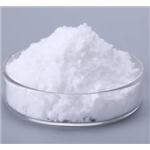
US $100.00-90.00/kg2024-04-30
- CAS:
- 1398-61-4
- Min. Order:
- 1kg
- Purity:
- 99%
- Supply Ability:
- 20Tons
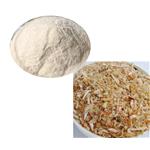
US $0.00/KG2024-04-28
- CAS:
- 1398-61-4
- Min. Order:
- 1KG
- Purity:
- ≥98% HPLC
- Supply Ability:
- 1000KG

